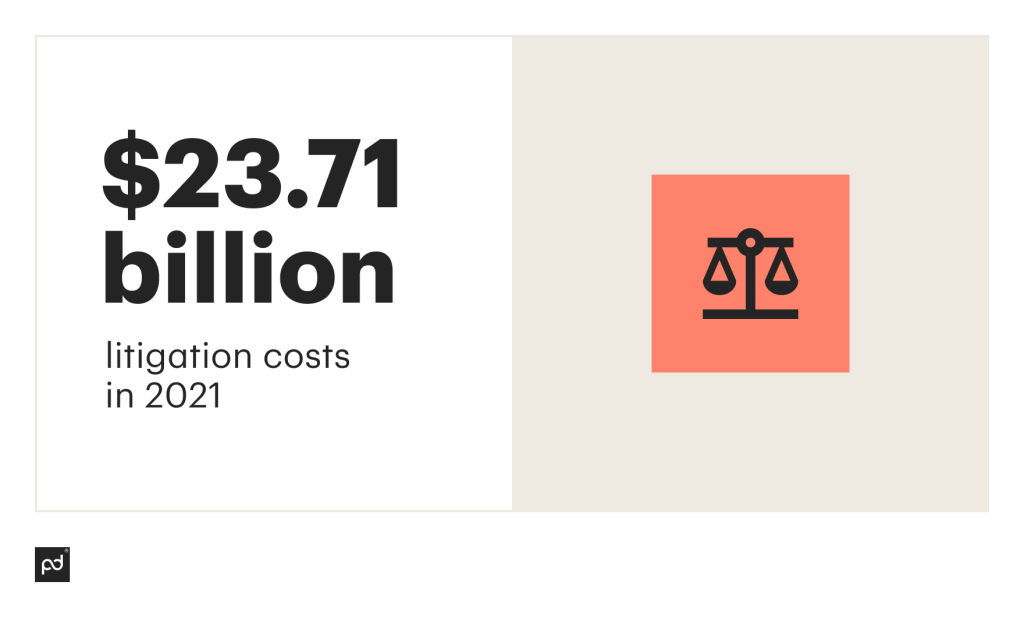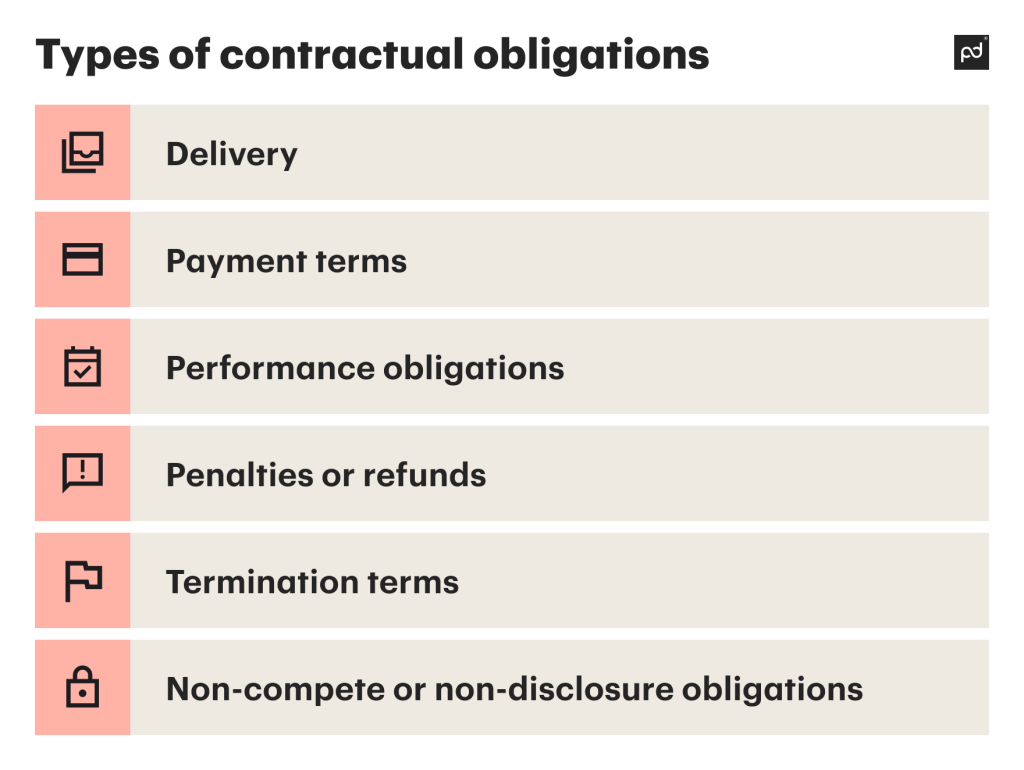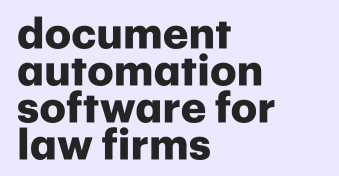Contracts are an essential element of doing business — they serve to protect your company’s interests, define clear terms to your agreements with partners and clients, and outline the obligations of each contracting side.
But what are contractual obligations, exactly?
In short, contractual obligations are promises or commitments codified in a contract.
So, by signing a contract, all parties agree to respect and fulfill their contractual obligations.
In this article, we’ll explain the details of what contractual obligations are, look at different types of obligations, discuss how to handle a breach of contract, and also (and perhaps most importantly) provide you with a framework for managing contractual obligations the right way.
Let’s roll.
Key takeaways
- Contractual obligations are the terms that all parties commit to when they sign a contract.
- The most common types of contractual obligations include delivery, timelines, payment terms, performance obligations, penalties, termination terms, non-compete and non-disclosure obligations.
- To make sure your organization is able to fulfill all its contractual obligations, it’s important to have clearly defined contract management processes. Using a dedicated contract management solution like PandaDoc helps you streamline this.
- In case of a contract breach, communication with all parties is essential. Seek legal advice if necessary.
What is a contractual obligation?
Contractual obligations are the contract terms that all parties commit to.
They’re the backbone of any contract; by spelling them out clearly, you’re making sure you can best prevent disputes and resolve issues swiftly.
There are many types of contractual obligations and they cover a vast array of commitments concerning:
- The delivery
- Timelines and due dates
- Payment terms
- Performance and quality
- Termination, and more.
Contractual obligations are legally binding, meaning that if one side fails to fulfill their end of the deal, the other side can take legal action — which, as you can imagine, can be extremely costly and damaging for businesses.
In the US, litigation costs have been constantly on the rise between 2015 and 2021, reaching $23.71 billion in 2021.

This means it’s essential for every business to define precisely the scope of their responsibilities for each contract they’re signing.
The contract process: How can you make sure your contracts are valid?
To have a contractual obligation, the contracting parties need a valid contract.
But what exactly makes a contract valid, you might be wondering?
There are a number of elements that a contract must contain to be considered valid:
- An offer: The offer is essentially the scope of the contract and typically refers to a product or service that one party is offering to the other.
- Acceptance: The other party needs to accept the offer to enter a contract.
- Consideration: The accepting party needs to offer some form of consideration (or compensation) in return, which is typically a payment.
- The contracting parties’ capacity: All contracting parties must be entering the agreement of their own free will and have the full capacity to understand its terms.
- Intention: All parties have the intention to enter a legally binding contract.
- Legality: Everything outlined in the contract must be within the law.
While contracts can be either verbal or written, it’s certainly a good practice to put everything in writing to make sure that both sides share a common understanding of their contractual obligations and a document they can refer to.
Obviously, counting on your memory is problematic in business relationships.
The best way to manage your contract process and create legally valid contracts is by using a dedicated contract management platform like PandaDoc.
Doing so enables you to:
- Create airtight, legally binding contracts in minutes (instead of hours or days)
- Negotiate contract obligations and update documents in real time, before you sign them
- Collaborate effortlessly with team members and other contracting parties
- Store and manage all contracts in a single location, enabling you to pull out any contract and verify info in seconds
If you’re having trouble navigating all the contracts of your company and staying on top of your contractual obligations, you can schedule a quick 15-minute demo with PandaDoc today and see for yourself how much easier contract management can be.
Types of contractual obligations
There are many types of contractual obligations but what unites them all is that they’re up for discussion between the parties involved — and that those obligations should be unambiguously stated in the contract.
The best way to do this (and therefore to protect your interests) is to use contract templates that are adapted to your needs and all use case scenarios you’re dealing with.
PandaDoc has hundreds of those to help you manage all obligations and make sure they’re always explicitly defined in each contract.
Let’s look at some of the most common types of contractual obligations.

Delivery
You need to make sure that everything related to the delivery is clearly spelled out. This includes:
- The exact product or service to be delivered
- The method of delivery, i.e. how the product or service will be delivered
- The timeline of delivery and eventual milestones
In case either party needs to meet specific conditions for the delivery to take place (for example, an upfront payment), you should also state this in the contract.
Payment terms
Ah, payment terms!
Obviously, payment terms are crucial for the smooth execution of a contract.
They might vary depending on the type of agreement, the industry, and the parties’ policies — but in all cases, you need to spell them out.
Here are some common payment terms you might find in contracts:
- Subscription payments: A client pays a fixed amount, usually monthly or yearly, to get access to a specific product (such as a CRM platform, for example).
- Retainer payments: Similarly to subscription payments, a client pays a fixed amount upfront to secure access to the services of a provider (e.g. a lawyer or a consultant) for a certain period of time
- Milestone payments (or progress payments): Payments are made at specific milestones in a project, such as the completion of a certain phase.
- Payment on delivery: Payment is due upon delivery of the goods or services.
- Upfront payments: Upfront payments represent a percentage payment (e.g. 50%) that is due before work begins. The rest of the amount is typically due upon delivery.
Additionally, payment terms may vary based on when the payment is actually due:
- Net 0: The payment is due upon reception of the invoice
- Net 30: This means that payment is due 30 days after the invoice date. For example, if you issue a net-30 invoice on April 10, the payment is due on May 10
- Net 60: Similar to net 30, payment is due 60 days after the invoice date
- Net 90: Payment is due 90 days after the invoice date
Performance obligations
Performance obligations are the specific commitments of one party to the other in terms of the execution and delivery of the product or service.
To avoid disappointment and disputes, it’s crucial that all performance obligations you’re agreeing to are feasible, achievable, and realistic.
Make sure that during the negotiation process you discuss all risks and uncertainties that might impact the delivery, including specific details and requirements you need from the other side — and outline them in the contract, if necessary.
Penalties or refunds
Outlining specific terms for penalties and refunds (in the case of non-fulfillment of a contractual obligation, for example) might sound risky; after all, why imply that things might not always go well when working with a client or partner?
However, having a specific penalty and refund clause protects you from costly (and lengthy) disputes and protects both parties in case things go awry.
Let’s face it: Late payments and missed deadlines do happen and it’s better to be prepared than to extinguish fires.
Termination terms
Contracts aren’t forever, but you need to make sure you can end them the right way. How? By defining the termination terms. And more specifically:
- The notice period
- The penalties or compensation that might be due
- Post-termination responsibilities
Non-compete or non-disclosure obligations
A non-compete obligation is a commitment to not compete with the other party; in the case of employment contracts, non-compete obligations might involve not working for a competitor in a given area, industry, or within a specific timeframe (although the US Federal Trade Commission is proposing to ban such clauses).
Non-disclosure obligations refer to the promise to not disclose confidential business information and are usually time-bound.
Contractual obligations and contract breaches: What is a breach of contract?
Regardless of how well a contract is thought out, formulated, and negotiated, sometimes, the unthinkable might happen: One or both sides might sometimes fail to meet their obligations.
What then?
What happens if you cannot fulfill your contractual obligations?
If you cannot fulfill your contractual commitment, there are a few things you can do to limit the level of damage, first to your partnership and then to your reputation.
- Check the contract’s exact terms: The first step is to double-check your exact commitment. Pull out the contract to verify the details, and especially the delivery terms, due dates, and penalties. A contract management solution where you store all documents can prove very useful for this.
- Talk to the other party to find a solution: Clear communication with the other side is essential and in most cases, they’ll appreciate it and be willing to work with you on defining the best course of action. This might include being released from the contract, amending it, providing a refund, or postponing the delivery date, for example.
- Get legal advice if needed: If communication is not enough to solve the issue, it might be time to get legal advice and see what your next steps should be to limit damages.
- Reassess contractual obligations: To prevent this from happening in the future, assess what went wrong and how you can better protect your business. Do you need to modify your templates? Do you need to negotiate longer delivery timelines?
It’s a good idea to have a strategy for navigating such a scenario before it actually happens.
What happens if the other party breaches the contract?
If you’re the non-breaching party, you need to decide on a plan to control damage. Here are some of the steps you can take:
- Assess the impact: How will the breach of contract affect your operations? Will it jeopardize your relationships with clients or partners? Is there a way you could limit the damage before it spreads?
- Request a solution (or a refund): Next, talk to the other party to see what solutions they could offer. A refund request might be the next step.
- Get legal advice: If you decide to sue, you need to get legal advice to help establish the best course of action.
Regardless of who the breaching party is, if you’re armed with the right platform for contract lifecycle management (like PandaDoc), negotiating a solution becomes much easier. Here’s why:
- Contract templates protect you from contracts that aren’t well-designed or executed
- You have instant access to all your documents in one place
- You can easily share documents with the other side
- A CRM integration makes contacting the relevant person effortless
How to manage contract obligations effectively
As you can already see, understanding your contractual obligations and making sure the contracts you sign are valid is key for any business out there.
Now, we’ll discuss in more detail the ways you can leverage PandaDoc to make the contract management process simpler and with fewer undesirable surprises.
1. Use contract templates
Do you need to draft a contract for a new type of deal but have no idea where to start?
Contract templates to the rescue! In our library, we have dozens of contracts you can use for free, ranging from a sales representative contract template to a videography contract template, a consulting contract template, and many more.
Contract templates are the easiest way to start instilling order into your future deals, and, as you can tell from the above examples, ours contain plenty of useful tips on how to best protect your interests.
2. Negotiate contracts efficiently
Contract terms are up for negotiation between all parties involved — but to be able to negotiate contract obligations efficiently, you need to have an efficient negotiation process.
With our platform, you can build a process that:
- Can accommodate multiple parties and teams: Need to have both Sales and Legal check the contract before you send it out? Does the other side need to collect multiple decision makers’ approvals? No problem — PandaDoc makes real-time collaboration a breeze.
- Is iterative: Negotiation sometimes requires redefining contract terms, and being able to do that as many times as needed is key.
- Allows for updates in real time: It’s much easier to sign deals faster if you can modify draft contracts in real time and on any device (yep, we also have a mobile app!).
3. Make it easy to sign contracts
Long gone are the days where you needed to print out a contract, sign it, scan it, and email it back to the other side to do the same.
(And, in case you’re wondering: Yes, both parties need to sign a contract to make it legally binding.)
PandaDoc is also an e-signature software that enables you to boost the speed with which you can sign documents and collect signatures anywhere, anytime.
Plus, it also improves the security of your contracts (both in terms of legal security and in terms of encryption).
4. Make sure your contracts are legally binding
Above, we discussed the different elements that make contracts legally binding.
But how do you ensure that in practice? Here’s how:
- Use templates that contain all the essentials: Signatories, scope of the contract, delivery terms, payment terms, termination terms, and so on.
- Spell out all contractual obligations clearly: Define all conditions clearly and have all sides read them carefully before accepting. A collaborative platform like PandaDoc makes this much easier.
- Collect legally binding electronic signatures: Signing contracts online is slowly becoming the norm. Make sure you collect all parties’ signatures; PandaDoc’s e-sign functionality is the best way to do that.
5. Keep track of all contracts
To stay on top of all the commitments of your business, you need to meticulously keep track of all contracts and store them in a single location.
This makes it easier to manage delivery terms, expiration dates, payment terms, and all other obligations.
PandaDoc seamlessly integrates with the most popular CRM systems out there, including Salesforce, Zendesk Sell, HubSpot CRM, and more, which makes it super easy to coordinate the work of multiple departments and also keep track of everything in one place.
6. Set clear renewal or expiration terms
Clearly defining when contracts are to be renewed or when they expire are important for a few reasons, as they:
- Help provide transparency and avoid confusion and ambiguity
- Help ensure everyone is on the same page regarding the delivery timeline and the contract’s expiration
- Reduce the chance of disputes related to renewal terms
- Enable both sides to plan for the future
PandaDoc can help with this, too: You can create draft contracts with pre-defined renewal or expiry terms that are in line with the policies of your organization in minutes.
This way, you’ll make sure you’ll never forget to add a renewal clause to your contract.
7. Set automated contract reminders
Don’t be caught off guard by expiring contracts — allow for plenty of time for renegotiation by setting automated expiration reminders.
There are two ways to do this:
- By adding renewal notifications in PandaDoc: Available with our Enterprise plan or as an add-on for our Business plan users, our renewal notification feature enables you to easily set up email reminders for all your contracts.
- By integrating PandaDoc with your CRM: Alternatively, you can connect PandaDoc with your CRM and add all the important due dates and reminders there.
Streamline contract management to stay on top of your contractual obligations
Managing your contractual obligations the right way is crucial for your operations.
But with the growing volume of contracts that companies need to handle nowadays, this can prove to be a challenging task if you don’t have the right tools at hand.
Contract management software like PandaDoc is essential if you want to:
- Streamline and strengthen your contract processes
- Decrease the time and money you’re spending on paperwork
- Provide the best experience for all recipients
- Make sure all documents across your organization are consistent and legally binding
- Efficiently manage your contractual obligations — and those of your contractors
All of this helps you reduce the risk of misunderstandings, disputes, penalties, or litigation.
What are the next steps?
Start your 14-day free trial or sign up for a demo to see for yourself how much easier it can be to handle contracts — and no longer have to deal with endless email threads or (metaphorical) piles of paperwork.
Disclaimer
PandaDoc is not a law firm, or a substitute for an attorney or law firm. This page is not intended to and does not provide legal advice. Should you have legal questions on the validity of e-signatures or digital signatures and the enforceability thereof, please consult with an attorney or law firm. Use of PandaDocs services are governed by our Terms of Use and Privacy Policy.


